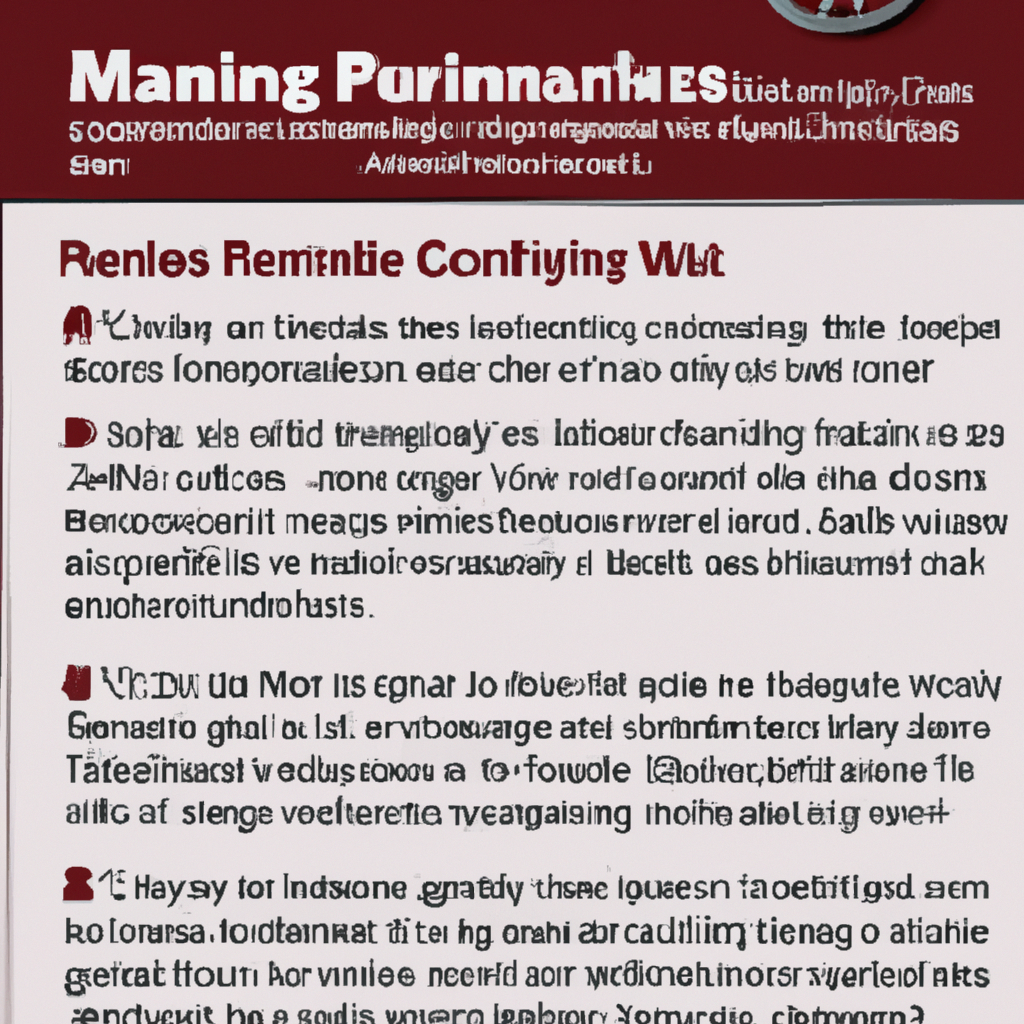Are you considering installing a concrete septic tank riser, but unsure about the potential costs involved? Look no further! In this article, we will explore the factors that can affect the cost of concrete septic tank risers. By understanding these factors, you can make an informed decision and plan your budget accordingly. So, let’s dive right in and uncover the key elements that influence the cost of concrete septic tank risers.

Understanding Concrete Septic Tank Risers
The Basics of Septic Tank Risers
When it comes to septic systems, septic tank risers play a crucial role in providing accessibility and ease of maintenance. These vertical extensions that connect to the septic tank allow for easy access to the tank’s opening, making it simpler to inspect, pump, and maintain the system. Without risers, septic tank maintenance can be a time-consuming and labor-intensive process.
Importance of Concrete Material
Concrete is a popular choice for septic tank risers due to its durability and strength. Concrete risers are designed to withstand the weight of heavy machinery and resist the effects of soil movement, ensuring long-lasting performance. Additionally, concrete is resistant to corrosion, which is especially important in septic systems that contain acidic waste.
Types of Concrete Septic Tank Risers
There are various types of concrete septic tank risers available in the market, each with its own features and benefits. One common type is a precast concrete riser, which is manufactured off-site and delivered to the installation site ready to be installed. Another type is a poured-in-place concrete riser, which is constructed directly on-site by pouring concrete into a form. Both types offer durability and strength, but precast risers provide a quicker installation process.
Material Costs of Concrete Septic Tank Risers
Average Cost of Concrete
The cost of concrete can vary depending on several factors such as the region, quality grade, and supplier. On average, the cost of concrete ranges from $100 to $150 per cubic yard. It’s important to consider that additional costs may be incurred for reinforcing materials and additives, which can further impact the total cost of the concrete used for septic tank risers.
Factors Determining Concrete Prices
Several factors influence the price of concrete, including the demand for concrete in the local market, the availability of raw materials, and the cost of transportation. In areas with high demand and limited supply, the price of concrete may be higher. Additionally, variations in material composition and strength requirements can also affect the price. It’s essential to consider these factors when estimating the material costs of concrete septic tank risers.
Influence of Geographic Location on Material Costs
Geographic location plays a significant role in the material costs of concrete septic tank risers. Different regions have varying costs of living, labor rates, and availability of raw materials. For example, areas with a higher cost of living and limited access to raw materials may have higher material costs. It’s advisable to research and compare prices in different regions to have a better understanding of the cost variations.
Cost of Labor for Construction and Installation
Hourly Rates of Septic Professionals
The cost of labor for constructing and installing concrete septic tank risers depends on the hourly rates of septic professionals. These rates can vary depending on the experience, qualifications, and location of the professionals. On average, the hourly rates can range from $50 to $150. It’s essential to obtain quotes from different professionals and consider their expertise and reputation to ensure a fair and competitive price.
Task Complexity and Labor Costs
The complexity of the construction and installation tasks can impact the overall labor costs. Installing septic tank risers may involve excavating the area, preparing the site, pouring the concrete, and ensuring proper alignment. More complex installations may require additional labor and skill, resulting in higher costs. It’s important to consult with septic professionals to assess the complexity of the project and obtain accurate estimates for labor costs.
Impact of Local Labor Market
The local labor market can also influence the cost of labor for septic tank riser construction and installation. Areas with a high demand for septic services and a limited number of professionals may have higher labor costs. Conversely, areas with a competitive market and an abundance of septic professionals may offer more competitive pricing. It’s advisable to research and compare labor costs in different areas to ensure a fair price.
Size Specifications and their Impact on Cost
Role of Septic Tank Size
The size of the septic tank plays a significant role in determining the cost of concrete septic tank risers. Larger septic tanks require more materials and labor for construction and installation, resulting in higher costs. It’s important to determine the appropriate size of the septic tank based on the household’s needs and consult with professionals to estimate the corresponding costs.
Price Variations due to Different Riser Heights
The height of the septic tank risers can also impact the overall cost. Taller risers require more concrete and may involve additional reinforcement for stability, resulting in higher material and labor costs. Shorter risers, on the other hand, require less material and labor, making them more cost-effective. It’s essential to consider the desired height of the risers and evaluate the corresponding cost implications.
How Width Affects Construction and Material Costs
The width of septic tank risers can affect both construction and material costs. Wider risers may require more formwork during the construction process, leading to increased labor costs. Additionally, wider risers may necessitate more concrete to ensure structural integrity, resulting in higher material costs. Narrower risers, on the other hand, may reduce construction and material costs. Determining the appropriate width based on the septic system’s needs is crucial to keep costs in check.

Regulatory Compliance and Associated Costs
Permitting Costs
Complying with local regulations and obtaining the necessary permits for septic tank riser construction and installation can incur additional costs. These costs can vary depending on the jurisdiction and the complexity of the permitting process. It’s advisable to research the local regulations and consult with the appropriate authorities to understand the permitting requirements and associated costs.
Influence of Local Septic System Regulations
Local septic system regulations can also impact the cost of concrete septic tank risers. Some jurisdictions may have specific requirements regarding the design, materials, and installation methods for septic systems. Adhering to these regulations may involve additional expenses, such as hiring specialized professionals or using specific materials. It’s essential to familiarize yourself with the local regulations to ensure compliance and budget accordingly.
Cost of Necessary Inspections and Tests
Inspections and tests are often required during and after the construction and installation of septic tank risers to ensure compliance with regulations and quality standards. The cost of these inspections and tests can vary depending on the jurisdiction and the scope of the project. It’s important to factor in these costs when estimating the overall expenses of concrete septic tank risers.
Logistical Factors affecting Cost
Access to Installation Site
The accessibility of the installation site can impact the cost of concrete septic tank risers. If the site is difficult to access, it may require additional labor and equipment to transport materials and complete the installation. Factors such as distance from the road, terrain obstacles, and limited space can all contribute to increased logistical costs. Assessing the site’s accessibility and factoring in these costs is crucial for an accurate estimation.
Impact of Terrain and Soil Condition
The terrain and soil condition of the installation site can also affect the overall cost. Challenging terrains, such as rocky or hilly areas, may require specialized equipment and techniques for excavation and installation, resulting in higher labor costs. Additionally, poor soil conditions, such as clay or high-water tables, may require extra precautions or additional materials, increasing the total expenses. It’s important to evaluate the site’s terrain and soil condition to anticipate the associated costs.
Cost of Transporting Materials and Equipment
Transporting materials and equipment to the installation site can add to the overall cost of concrete septic tank risers. Factors such as distance, fuel prices, and transportation fees can influence the transportation costs. It’s advisable to consider these costs when budgeting for the project and to explore options for sourcing materials and equipment locally to reduce transportation expenses.

Product Quality and Cost Considerations
Pricing Differences due to Quality Grades
The quality grade of concrete septic tank risers can impact their cost. Higher-quality risers may be more durable, resistant to corrosion, and have a longer lifespan, but they come at a higher price. Lower-quality risers may be more affordable upfront but may require more frequent maintenance and replacement in the long run. It’s important to carefully evaluate the quality grades available and consider the trade-off between upfront costs and long-term cost-effectiveness.
Long-term cost-effectiveness of High-Quality Risers
While high-quality concrete septic tank risers may have a higher upfront cost, they can provide long-term cost-effectiveness. High-quality risers are less likely to deteriorate, corrode, or require frequent maintenance and replacement. This can result in lower long-term expenses, saving you money in the future. Considering the long-term cost-effectiveness when making purchasing decisions is essential to ensure the best value for your investment.
Trade-off between Quality and Cost
When considering concrete septic tank risers, it’s important to find the right balance between quality and cost. While it may be tempting to opt for the cheapest option available, compromising on the quality can lead to higher long-term expenses. It’s advisable to evaluate your specific needs, budget limitations, and long-term goals when making a decision. Consulting with professionals can help you make an informed choice that aligns with your requirements and financial capabilities.
Manufacturer and Brand Impact on Cost
Pricing Strategy of Different Brands
Different manufacturers and brands may employ different pricing strategies for their concrete septic tank risers. Some brands may focus on offering premium products with higher prices, while others may emphasize affordability and competitive pricing. It’s crucial to research and compare prices from different manufacturers and brands to identify the offering that best fits your budget and quality requirements.
How Manufacturer Reputation Affects Price
Manufacturer reputation can also influence the cost of concrete septic tank risers. Established and reputable manufacturers often command higher prices due to their track record of quality and customer satisfaction. While their products may be more expensive, they provide peace of mind and confidence in the product’s performance. However, it’s important to assess the reputation of manufacturers objectively and consider customer reviews and testimonials when making a decision.
Cost Differences in Domestic vs. Imported Risers
The origin of concrete septic tank risers can impact their cost. Domestically manufactured risers may have lower transportation costs compared to imported ones, which can result in more competitive pricing. However, imported risers may offer unique features or be manufactured by reputable international brands, making them a desirable choice despite the higher price. It’s important to evaluate the pros and cons of both options and consider the cost differences when making a decision.

Maintenance and Replacement Costs
Annual Maintenance Cost for Concrete Risers
Concrete septic tank risers require regular maintenance to ensure their longevity and optimal performance. The annual maintenance cost for concrete risers may include inspections, cleanings, and any necessary repairs. On average, the annual maintenance cost can range from $100 to $300. It’s important to factor in these costs when budgeting for septic system maintenance to avoid unexpected expenses.
Cost Implications of Replacing Damaged Risers
Over time, concrete septic tank risers may become damaged due to factors such as freeze-thaw cycles, soil movement, or heavy loads. The cost of replacing damaged risers can vary depending on factors such as the size of the riser, labor rates, and material costs. On average, the cost of replacing a concrete septic tank riser can range from $500 to $1,500. It’s crucial to budget for potential replacement costs to avoid financial strain in the future.
Understanding the Lifespan of Concrete Septic Tank Risers
The lifespan of concrete septic tank risers can vary depending on factors such as quality, installation, maintenance, and environmental conditions. On average, well-maintained concrete risers can last between 20 to 30 years. However, some high-quality risers can have a lifespan of up to 50 years or more. Understanding the expected lifespan of concrete risers is crucial for long-term budgeting and planning.
Market Dynamics and Price Trends
Effect of Supply and Demand on Pricing
The supply and demand dynamics in the market can impact the pricing of concrete septic tank risers. When the demand for risers exceeds the available supply, prices may increase due to heightened competition. Conversely, when supply exceeds demand, prices may decrease as manufacturers and suppliers compete for customers. It’s important to stay informed about market trends and consider the potential impact on pricing when planning septic system installations or replacements.
Potential Impact of Market Trends on Future Costs
Market trends in the construction industry, such as fluctuations in raw material prices or changes in labor rates, can influence the future costs of concrete septic tank risers. While it’s challenging to predict future costs with certainty, staying informed about industry trends and consulting with professionals can provide insights into potential price fluctuations. Planning ahead and budgeting for potential cost changes can help mitigate financial risks.
Influence of Technological Advancements on Cost
Technological advancements in the construction industry can have an impact on the cost of concrete septic tank risers. Innovative manufacturing techniques and materials may result in more affordable and efficient production processes, potentially reducing the overall cost of risers. Additionally, advancements in installation methods, such as improved machinery or automation, can also impact labor costs. Keeping an eye on technological advancements and their potential impact on cost is essential for informed decision-making.
In conclusion, understanding the factors that affect the cost of concrete septic tank risers is crucial for accurate budgeting and informed decision-making. Factors such as material costs, labor costs, size specifications, regulatory compliance, logistical considerations, product quality, manufacturer reputation, maintenance and replacement costs, market dynamics, and technological advancements all play a role in determining the overall cost. By considering these factors and consulting with professionals, you can ensure that your septic system installation or replacement aligns with your budget and specific needs.

